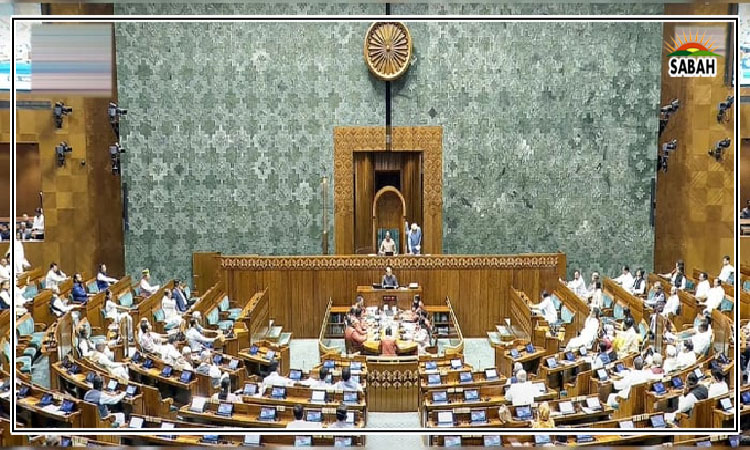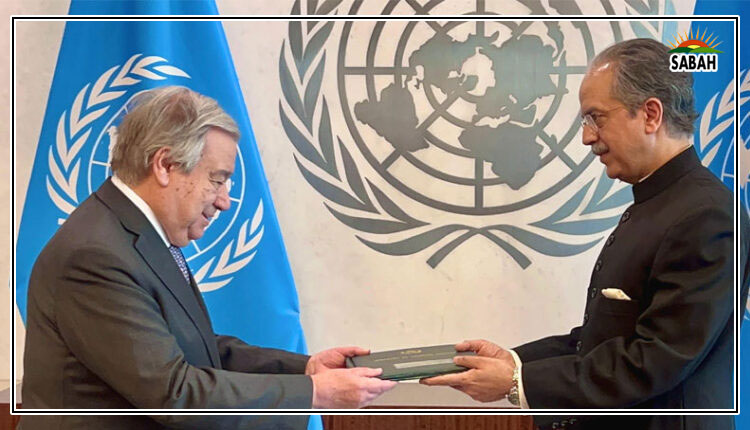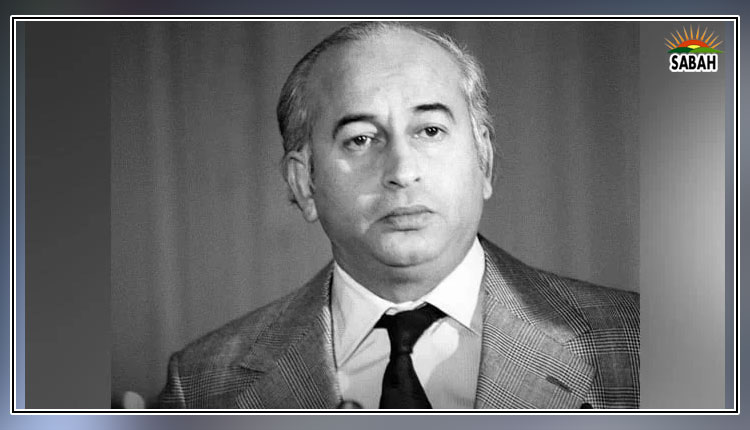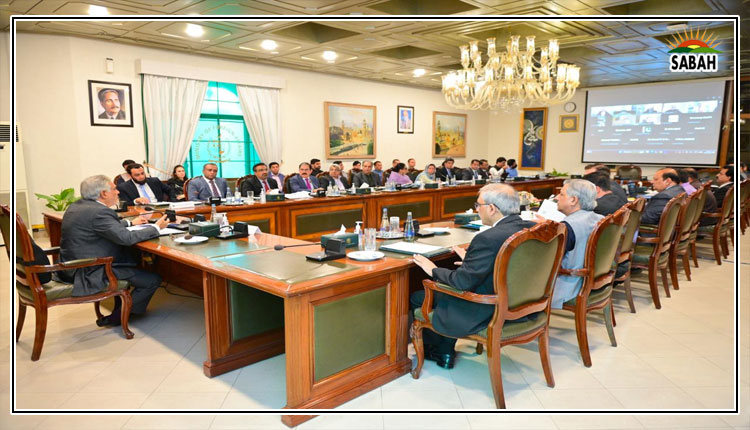Limits of coercion …. Maleeha Lodhi
IT is widely believed that Pakistan’s geostrategic location has been a great asset for the country. But it has also been an enormous challenge. In fact, the tyranny of geography has imposed heavy burdens on Pakistan and its people.
The country’s location in a volatile neighbourhood and the headwinds of global geopolitics driven by big power interests have long placed Pakistan in the crosshairs of many regional storms and facing the multidimensional fallout of wars and internal strife in Afghanistan.
Insecure borders, including contested ones, a hostile neighbour and turmoil in other neighbouring countries urged Pakistan to evolve defence strategies and security policies to avoid a two-front situation. Its nightmare scenario is having to simultaneously deal with more than one hot front. Today, the country has troubled relations with three of its neighbours and hot borders with at least two of them. With a third country, there are unresolved problems of border management.
It is against this backdrop that the current state of strained relations with Afghanistan needs to be assessed. Stable ties with Kabul are Pakistan’s strategic compulsion. But relations have steadily deteriorated over the past 18 months and hit a new low. This is contrary to expectations of policymakers that the Taliban’s return to power in 2021 would help Pakistan secure its western border. Instead, there was a marked escalation in border tensions and terrorist attacks targeting Pakistan’s security forces. A surge in violent activities by the Tehreek-i-Taliban Pakistan (TTP) from their safe havens in Afghanistan posed increasing threats to Pakistan’s security.
This was not surprising as the “TTP benefited the most of all the foreign extremist groups in Afghanistan from the Taliban takeover”, according to successive reports by the UN Security Council’s Analytical Support and Sanctions Monitoring Team. This echoed Pakistan’s assessment that Kabul’s unwillingness to act against the TTP and its regrouping in Afghanistan after the Taliban’s assumption of power presented a mounting threat to Pakistan’s security. Cross-border attacks escalated following the breakdown in November 2022 of the ceasefire brokered by the Afghan Taliban between Pakistani authorities and the TTP. The short-lived ceasefire was an ill-thought and futile attempt by the Pakistani authorities to end the armed group’s 14-year war on Pakistan. The outlawed group never observed the truce, only leveraged it to expand its reach in Pakistan.
Pakistan needs to craft a more nuanced carrot-and-stick policy to deal with Afghanistan’s Taliban rulers.
Pakistan’s efforts to persuade Afghanistan’s Taliban rulers over the past two years to take action against the TTP yielded little. In countless rounds of talks, Pakistani officials urged Kabul to disarm the TTP, detain its leaders and rein in its violent activities. Taliban leaders offered assurances, asking for time, but did nothing. This produced growing frustration in Islamabad, especially as the spike in terrorist activities led to a significant rise in casualties among security personnel. Increasingly, military and government leaders publicly assailed Kabul and voiced concerns over “the safe havens and liberty of action available to the TTP in Afghanistan”. Taliban leaders were asked to choose between Pakistan and the TTP and served notice that their lack of response would force Islamabad’s hand.
The latest expression of official exasperation with Kabul came in a press conference last week by Interior Minister Mohsin Naqvi. Holding TTP responsible for the March attack on Chinese workers in Bisham, he said it had orchestrated this from Afghanistan as a “flagship project” supported by “enemy intelligence agencies”. He demanded Kabul should arrest the terrorists behind the attack, prosecute them or hand them over to Pakistan. Despite Islamabad’s urgings, he said, the Taliban had not taken measures to prevent militants from launching attacks from their Afghan sanctuaries. Last Thursday, a corps commanders conference also expressed serious concern over “continuous cross-border terrorist attacks” from Afghan soil, adding that “hostile foreign actors were using Afghanistan” to target security personnel and civilians in Pakistan.
Last fall, with its patience exhausted, Islamabad toughened its policy towards Afghanistan. Since then, it has taken several actions to raise the costs for the Taliban of its non-cooperation on TTP. Pakistan’s coercive approach towards Kabul has had four elements. One, it has conducted air strikes on hideouts of the militant group in Afghanistan, most recently in April. In a departure from the past, when undeclared kinetic actions were undertaken, this time Islamabad announced Pakistan had carried out air strikes against militant sanctuaries. This met with a toughly worded response from Kabul and border tensions. But Islamabad warned such actions would continue unless the Taliban changed course.
The second element of coercive policy were restrictions on transit trade, which involved the ban imposed last October on a number of items that could be imported by Afghanistan via Pakistan. While the action aimed to curb smuggling, it also served a political purpose — to ratchet up pressure on Kabul. The message was not lost on the Taliban, who accused Pakistan of politicising trade. Later. some restrictions were eased as a ‘carrot’ to influence Taliban behaviour.
The third element of the ‘stick’ approach was expulsion of around 700,000 undocumented Afghans residing in Pakistan, also announced last fall. This has been implemented with well over half a million Afghans repatriated to Afghanistan. A second phase looms with the decision to deport around 600,000 Afghans holding citizen cards issued by Pakistan a few years back.
The fourth element of Pakistan’s coercive policy involves regular public denunciations of Kabul’s failure to stop cross-border attacks. For example, ISPR has frequently said. “The Afghan interim government is not only arming terrorists but also providing a safe haven for terrorist organisations involved in terrorism in Pakistan.” Ministers have similarly chastised Kabul.
The question then is whether this coercive approach has yielded results. From the persisting TTP attacks it does not appear so. Nor does the interior minister’s statements indicate change in the Taliban’s behaviour. The vexing policy dilemma for Pakistan is that it cannot afford a rupture in relations with Afghanistan, especially because of its other troubled borders. It therefore needs to acknowledge that coercion alone will not deliver the outcome it wants. Instead, it will have to craft a more nuanced and calibrated carrot-and-stick approach.
Both incentives and disincentives have to be employed. Islamabad should also work with other neighbours of Afghanistan, especially China, on a coordinated regional strategy to persuade the Taliban to shift course.
The writer is a former ambassador to the US, UK and UN.
Courtesy Dawn, June 3rd, 2024












